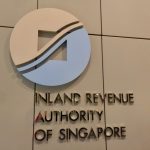Did you know that nationals or Permanent Residents of five countries are accorded the same Stamp Duty treatment as Singapore Citizens? The nationals from these five countries, just like Singapore citizens, are exempt from the current rate of the Additional Buyer’s Stamp Duty (ABSD) levied on foreigners when they purchase residential properties. The ABSD for foreigner in Singapore is 20%.
 For Singapore Citizens, as far as stamp duty treatment is concerned, there is no ABSD on their first residential property.
For Singapore Citizens, as far as stamp duty treatment is concerned, there is no ABSD on their first residential property.
Table of Contents
For the second residential property, the ABSD rate is 12% and 15% for their third and any subsequent residential properties. Singapore Permanent Residents (SPRs) will be charged 5% ABSD on their first property and 15% for their second and subsequent residential properties.
As a result of Free Trade Agreements signed by the Singapore Government, nationals and permanent residents of these five countries are accorded the same Stamp Duty treatment as Singapore Citizens. The Free Trade Agreements signed with the United States of America and the European Free Trade Association (EFTA), provides these exemptions to the residents of these countries.
Those who are able to enjoy this remission of ABSD are:
- Nationals of the United States of America; and
- Nationals and Permanent Residents of Iceland, Liechtenstein, Norway or Switzerland
This means that if you are a citizen of Iceland, Liechtenstein, Norway, Switzerland or United States of America, instead of paying an additional 20% for the ABSD, you do not need to pay any ABSD at all on your first residential property purchase in Singapore. And instead of 20%, the ABSD would be 12% for your second residential property and 15% for your third and subsequent properties.
This applies to only private non-landed residential properties, as foreigners are not allowed to purchase and own land in Singapore with the only exception being the luxurious water-front bungalows on Sentosa Cove.
Foreign investors who are eligible can submit an application of remission through their legal representative who can manage their stamp duty treatment and transactions with the Inland Revenue Authority of Singapore (IRAS) on your behalf.
The Government announced new property cooling measures in July last year. The measures saw adjustments to stamp duty treatment where the Additional Buyer’s Stamp Duty (ABSD) rates and Loan-to-Value (LTV) limits on residential property purchases, to cool the property market and keep price increases in line with economic fundamentals.
After declining gradually for close to 4 years, private residential prices began rising in 3Q2017. Prices have increased sharply by 9.1% over the past year. Demand for private residential property has also seen a strong recovery, as transaction volumes continue to rise.
The Government said the new stamp duty treatment was necessary to check sharp increase in prices, which could run ahead of economic fundamentals and raise the risk of a destabilising correction later, especially with rising interest rates and the strong pipeline of housing supply. The new property cooling measures introduced by the Government includes raising the ABSD rates and tighten LTV limits for residential property purchases.
The Government made the following changes to ABSD rates:
a. Raise ABSD by 5%-points for all other individuals; and
b. Raise ABSD by 10%-points for entities; and
c. Introduce an additional ABSD of 5% that is non-remittable under the Remission Rules (payable on the purchase price or market value, as applicable) for developers purchasing residential properties for housing development.
LTV limits were also tightened by 5%-points for all housing loans granted by financial institutions. These revised LTV limits do not apply to loans granted by HDB. The LTV Limit will be 25 years, where the property purchased is a HDB flat.
The tightened LTV limits applies to loans for the purchase of residential properties where the OTP is granted on or after 6 July 2018. In line with the tightening of LTV limits for housing loans, LTV limits for mortgage equity withdrawal loans (MWLs) was tightened as follows:
a. 75% for a borrower with no outstanding housing loan for the purchase of another residential property; and
b. 45% for a borrower with an outstanding housing loan for the purchase of another residential property.
The Government said that it will continue to monitor the property market and adjust its policies as necessary, to maintain a stable and sustainable property market.It added that it was very concerned that prices are running ahead of economic fundamentals. The government noted that it has to avoid a sharp correction later as there is also a large supply of units coming on stream and interest rates are going up.
In July 2018, the Government new property cooling measures. The measures saw adjustments to the Additional Buyer’s Stamp Duty (ABSD) rates and Loan-to-Value (LTV) limits on residential property purchases, to cool the property market and keep price increases in line with economic fundamentals.
After declining gradually for close to 4 years, private residential prices began rising in 3Q2017. Prices have increased sharply by 9.1% over the past year. Demand for private residential property has also seen a strong recovery, as transaction volumes continue to rise.
The Government said the new property cooling measures were necessary to check sharp increase in prices, which could run ahead of economic fundamentals and raise the risk of a destabilising correction later, especially with rising interest rates and the strong pipeline of housing supply. The new property cooling measures introduced by the Government includes raising the ABSD rates and tighten LTV limits for residential property purchases.
Market watchers suggested that the 2018 property cooling measures were introduced after the aggressive bidding for land by developers resulted in the Government worrying that this could result in a supply imbalance and weight on the market.







